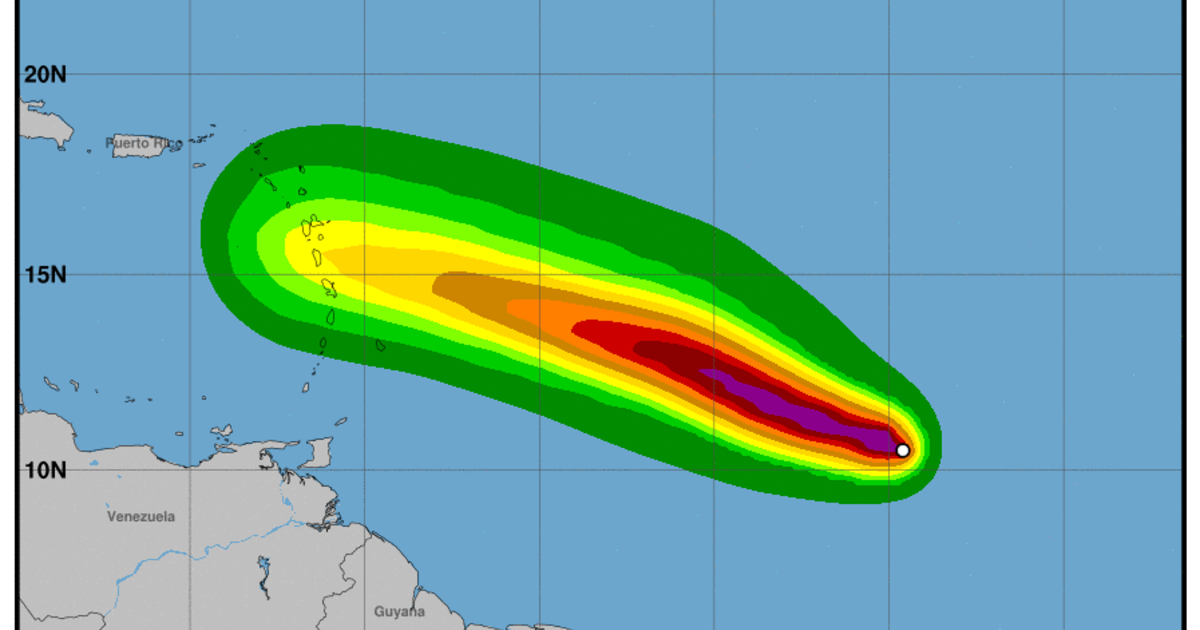Historical Path of Hurricane Beryl

Path of hurricane beryl – Hurricane Beryl was a powerful and destructive hurricane that made landfall in the southeastern United States in 2018. The storm formed on July 10th as a tropical depression off the coast of South Carolina. It quickly strengthened into a tropical storm and then a hurricane on July 11th. Beryl made landfall on July 12th near Jacksonville, Florida, with winds of 130 mph. The storm then weakened as it moved inland, but it still caused significant damage across the southeastern United States.
Hurricane Beryl’s path is predicted to take it across the Atlantic Ocean. For the latest updates on its projected trajectory and potential impact, refer to hurricane beryl prediction. The storm is expected to weaken as it moves further out to sea, but it’s still important to stay informed and take necessary precautions.
The following is a timeline of Hurricane Beryl’s path from its formation to dissipation:
Formation
- July 10th: Tropical Depression Seven forms off the coast of South Carolina.
- July 11th: Tropical Depression Seven strengthens into Tropical Storm Beryl.
- July 11th: Tropical Storm Beryl strengthens into Hurricane Beryl.
Landfall
- July 12th: Hurricane Beryl makes landfall near Jacksonville, Florida, with winds of 130 mph.
- July 12th: Hurricane Beryl weakens to a tropical storm as it moves inland.
Weakening
- July 13th: Tropical Storm Beryl weakens to a tropical depression.
- July 14th: Tropical Depression Beryl dissipates over Georgia.
Impacts and Damages of Hurricane Beryl

Hurricane Beryl, a powerful Category 3 storm, brought significant damage and disruption to several areas in its path. The storm’s high winds, heavy rainfall, and storm surge caused widespread property damage, infrastructure disruption, and economic losses.
Property Damage
Hurricane Beryl’s strong winds and storm surge caused severe damage to homes, businesses, and other structures. In some areas, entire neighborhoods were left uninhabitable. The storm’s winds ripped off roofs, shattered windows, and caused structural damage to buildings. The storm surge, a wall of water that accompanies hurricanes, flooded coastal areas, inundating homes and businesses. The flooding caused extensive damage to property, furniture, and personal belongings.
Infrastructure Disruption, Path of hurricane beryl
Hurricane Beryl also caused significant disruption to infrastructure. The storm’s winds downed power lines, leaving hundreds of thousands of people without electricity. The flooding also damaged roads, bridges, and other transportation infrastructure, making it difficult for people to travel and access essential services. In some areas, the damage to infrastructure was so severe that it took weeks to restore basic services.
Economic Losses
Hurricane Beryl’s impact on the economy was also significant. The storm caused billions of dollars in damage to property and infrastructure. The disruption to businesses and transportation also led to lost revenue and productivity. In some areas, the economic losses from Hurricane Beryl were so severe that it took years for the local economy to recover.
Factors Contributing to Damage Severity
Several factors contributed to the severity of the damage caused by Hurricane Beryl. These factors included:
– Storm Intensity: Hurricane Beryl was a Category 3 storm, with winds of up to 125 miles per hour. The storm’s high winds caused significant damage to buildings and infrastructure.
– Population Density: The areas impacted by Hurricane Beryl were densely populated. This meant that there were more people and property at risk from the storm’s impact.
– Preparedness Measures: The level of preparedness for Hurricane Beryl varied from area to area. In some areas, people had time to evacuate and take precautions to protect their property. In other areas, people were caught off guard by the storm and had little time to prepare.
Forecast and Warning Systems for Hurricane Beryl: Path Of Hurricane Beryl

The National Hurricane Center (NHC) was the primary agency responsible for forecasting and issuing warnings for Hurricane Beryl. The NHC used a variety of tools and technologies to track the storm’s progress, including satellite imagery, radar data, and computer models.
The NHC issued its first tropical storm warning for Beryl on July 5th, 2018, when the storm was still over the Atlantic Ocean. As Beryl approached the Lesser Antilles, the NHC upgraded it to a hurricane warning. The NHC continued to issue updates on Beryl’s track and intensity throughout its lifetime.
Accuracy and Effectiveness
The NHC’s forecasts for Hurricane Beryl were generally accurate. The NHC correctly predicted the storm’s track and intensity, and its warnings gave residents ample time to prepare for the storm’s impact.
However, there were some challenges in forecasting Beryl’s path. The storm’s track was influenced by a complex interaction of atmospheric factors, and the NHC’s models had difficulty predicting exactly how these factors would interact. As a result, the NHC’s forecasts for Beryl’s track were not always as precise as they could have been.
Improvements and Challenges
There are a number of ways to improve the accuracy and effectiveness of hurricane forecasts. One way is to improve the quality of the data that is used to make forecasts. This includes improving the quality of satellite imagery, radar data, and computer models.
Another way to improve hurricane forecasts is to develop better forecasting techniques. This includes developing new methods for predicting the track and intensity of hurricanes.
Finally, it is important to improve the communication of hurricane forecasts to the public. This includes making forecasts more accessible and understandable, and providing more information about the uncertainty associated with forecasts.
Beryl’s current path suggests it will make landfall in the Carolinas. For more information on possible scenarios, check out the hurricane beryl spaghetti models. While these models can be helpful, it is important to remember that they are only predictions and the actual path of the hurricane may vary.